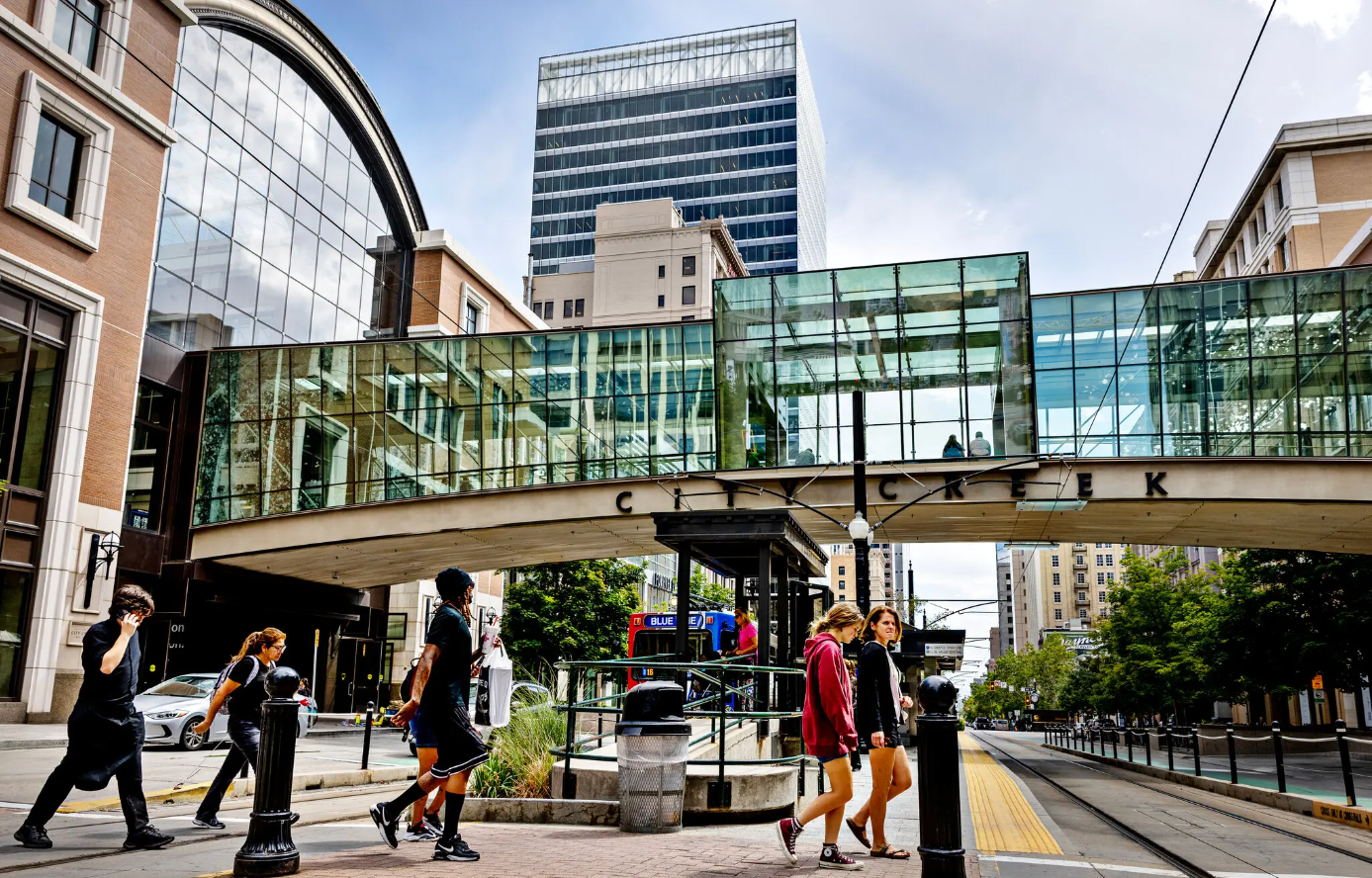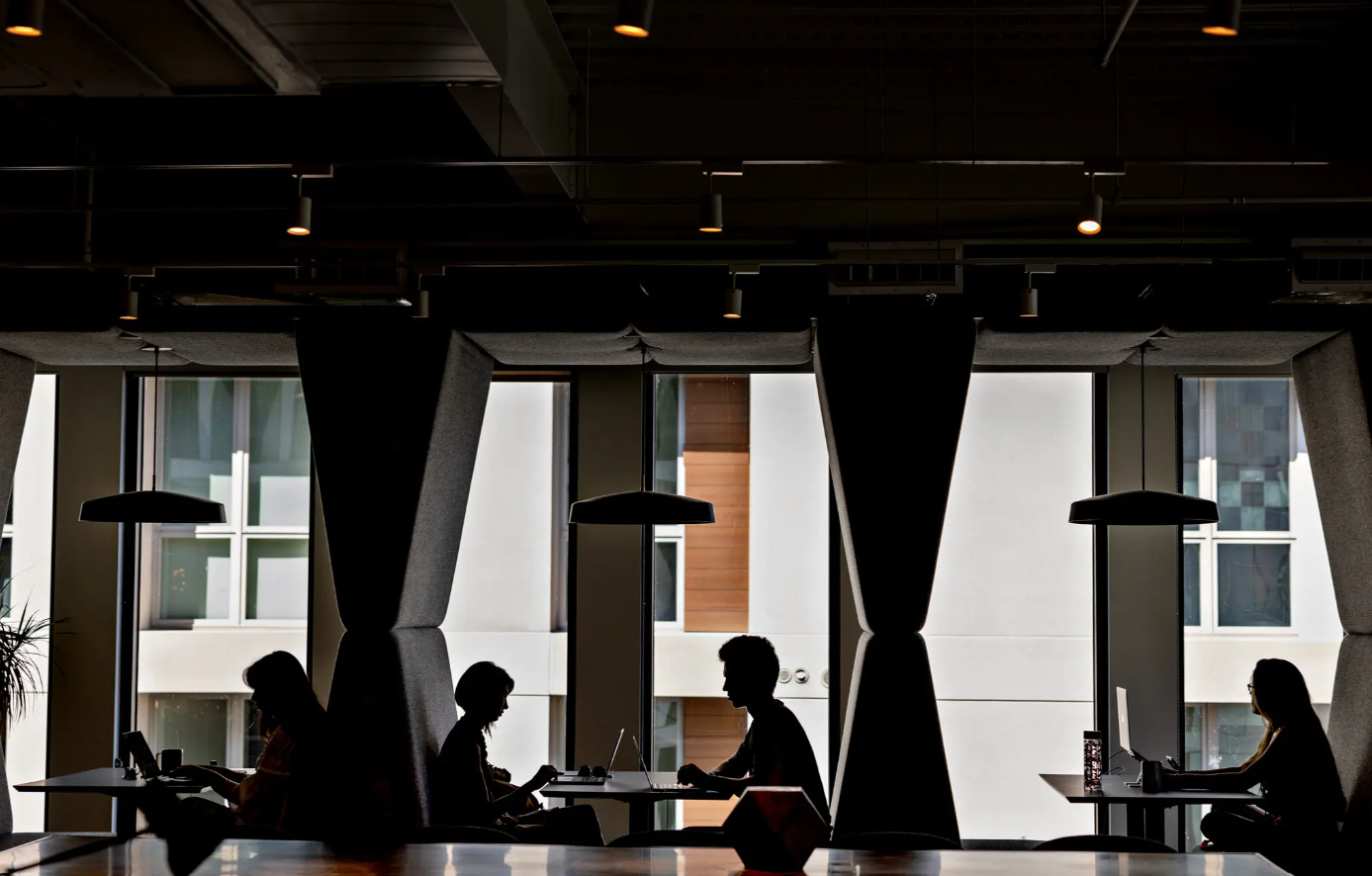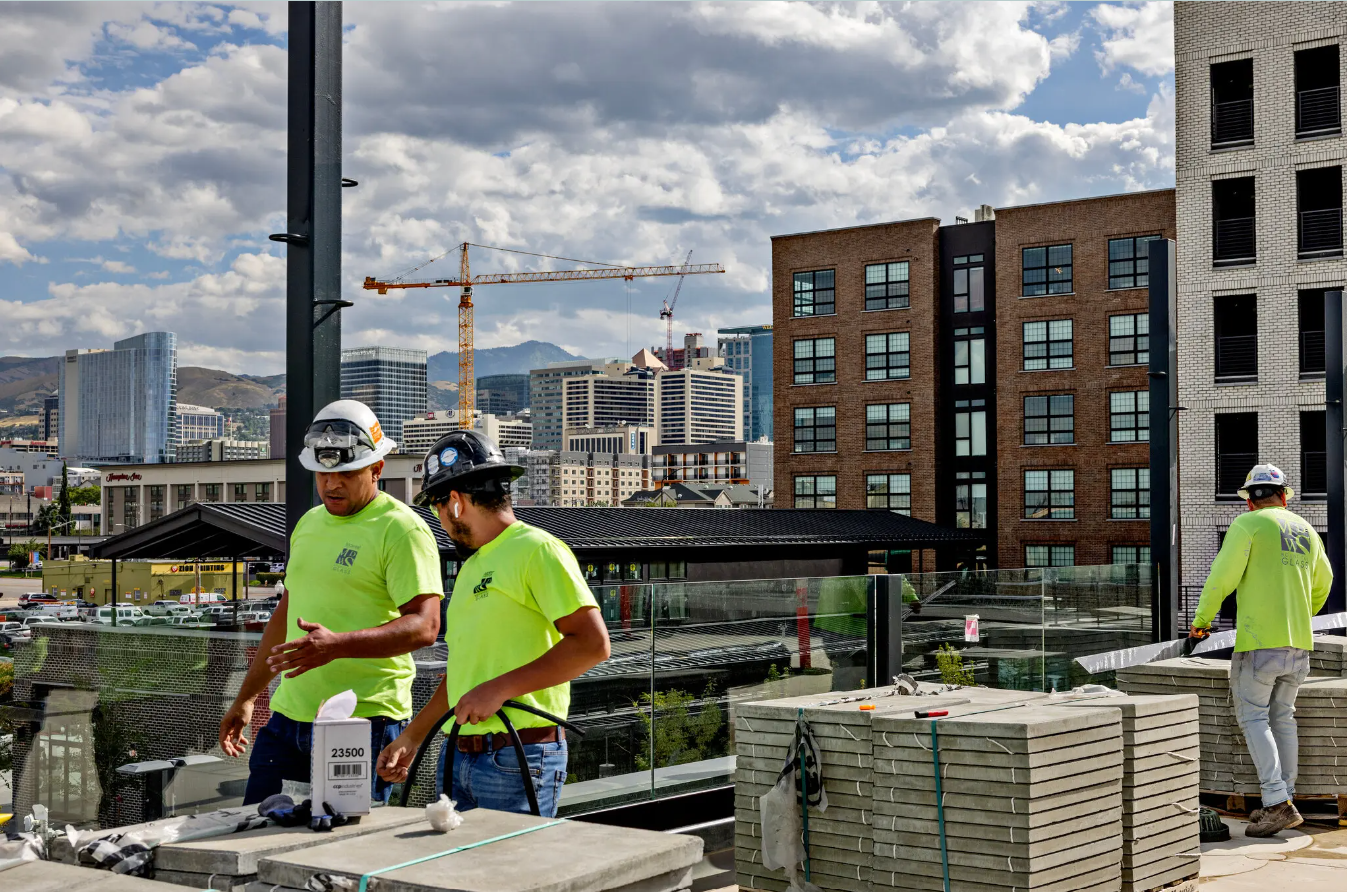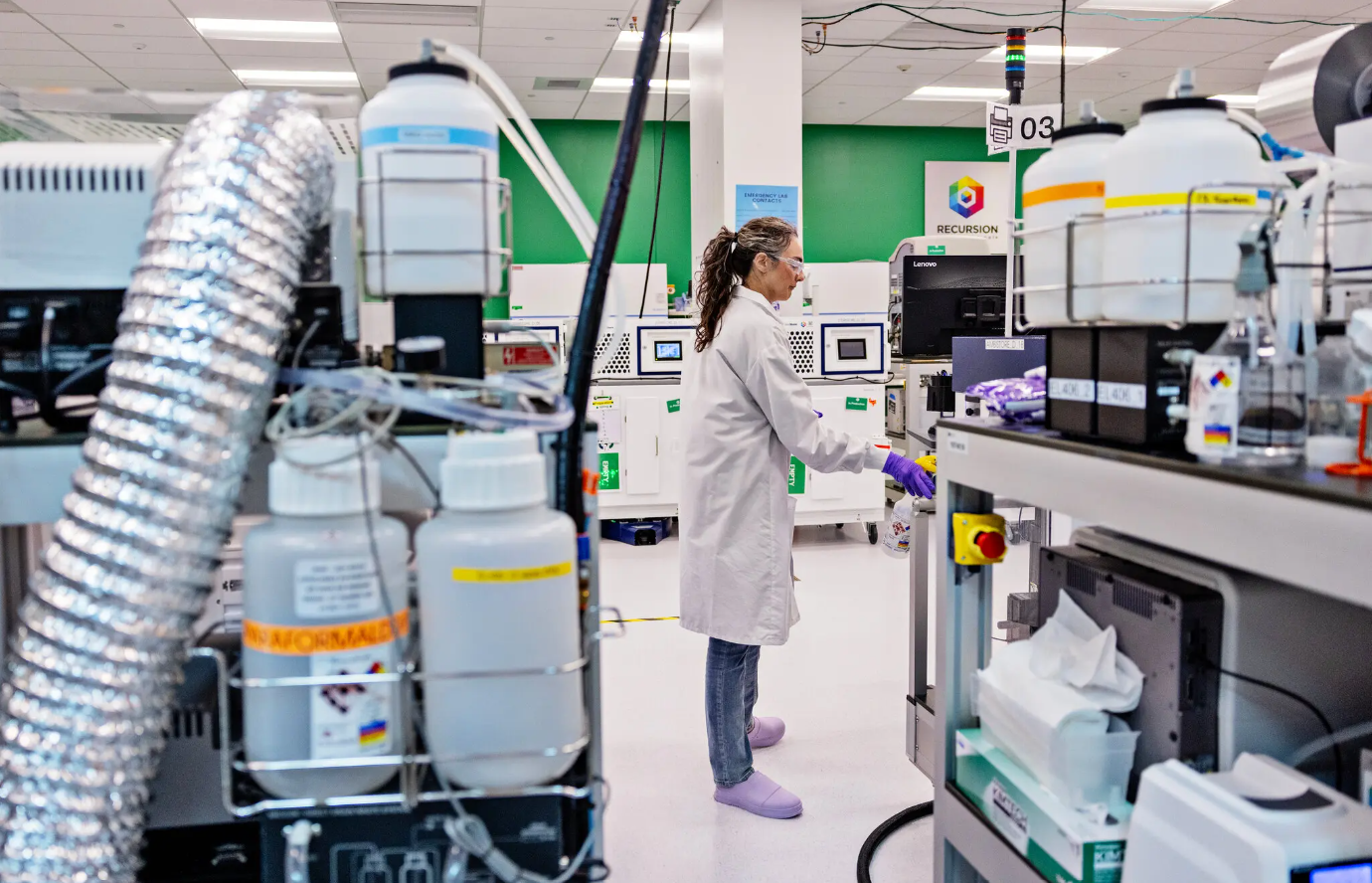By Miranda S. Spivack for The New York Times | Posted Tuesday, September 5, 2023

When Dino Fusco began traveling to Salt Lake City in the early 2000s for Goldman Sachs’s real estate arm, the odds of finding a coffee shop or brewpub were essentially zero. The influence of the generally conservative Mormon community over state politics and social issues made alcohol and caffeine scarce.
But in 2002, Utah began to plant the seeds of nearly two decades of economic and cultural change, no more evident than in Salt Lake City, the capital. The state is still reliably red and members of the Church of Jesus Christ of Latter-day Saints fill the Legislature, but Salt Lake City has evolved into a center for tech, bioscience and financial firms, attracting a stream of workers who fill the new bars, cafes, festivals and art fairs.
“Salt Lake City is really a nice alternative,” said Mr. Fusco, now the chief operating officer of Silverstein Properties, a developer investing in real estate projects in the city.
Utah is still relatively small, with only 3.4 million residents, but it is the fastest-growing state and has one of the lowest unemployment rates. Steady job growth, a stable economy and an influx of newcomers have helped instill a more modern vibe in the capital. They have also spurred substantial commercial and residential development, including luxury high-rises and upscale hotels.
“We are just like Austin, but we are seven or eight years behind,” said Brandon Blaser, the founder of BCG Holdings, a local developer.
But tensions remain in a state where 90 percent of the population identifies as white and many are politically conservative, which has added to strains in the Black and Hispanic communities. And rising housing prices and rents have priced lower-income residents out of the market and contributed to a rise in homelessness.
For many Utahans, the 2002 Winter Olympics were a major catalyst for change. With the Olympics came a new light rail in Salt Lake City, followed by a train network connecting Ogden, Salt Lake City and Provo, cities with thousands of college students.
Liquor laws eased as part of the effort to lure the Olympics. Today, Erin Mendenhall, Salt Lake’s third female mayor, promotes the city’s breweries at the top of her recorded welcome message at the airport, itself undergoing a $4.1 billion remake. An eclectic arts, jazz and hip-hop scene has emerged from the shadows. There is talk of luring major-league hockey and baseball teams.
“With the growth in our tech market, many people are able to stay here and get good, high-paying jobs,” said Eric Smith, a senior vice president of the real estate firm CBRE.
Utah also benefited from changes in working habits brought about by the pandemic. Salt Lake City became a destination for digital nomads on the hunt for cheaper and roomier housing. Utah fit their needs not only because of its smaller population but because of the proximity of outdoor activities like skiing, hiking and camping.

“The pandemic impacted markets in very different ways,” said Matt Schwartz, a co-chief executive of the Domain Companies, a developer based in New York. “Salt Lake City is really one of the markets that benefited from that experience.”
Jennifer Davidson, a Brooklyn transplant, moved to Salt Lake City in October 2020 after a visit to a friend here showed her how much she valued the outdoors. “It is really hard to have a bad day when you can drive 20 minutes and be in the mountains,” she said.
Ms. Davidson manages operations at the Shop, a co-working space that is part of a $130 million downtown complex known as the Exchange, Domain’s first project in the city. Domain is also developing a $320 million project nearby, and Mr. Schwartz said he hoped to develop other projects in the city.
Several blocks west, Mr. Blaser and Alex Lowe, a principal at Lowe Property Group, are developing the Post District, a $300 million project in a former industrial neighborhood. The project includes apartments, restaurants and a newspaper printing site that they are repurposing for Traeger Grills, which will move its headquarters from elsewhere in the city.
Goldman Sachs also recognized the demand in Salt Lake City. The firm occupies about 350,000 square feet in the city center and is helping to finance projects such as the Exchange and a project being developed by the Granary District, a former industrial area.
“Being downtown in Salt Lake City for us has been really deliberate,” said Jill Borst, the head of Goldman’s office here. The bank’s employees, she said, “like to walk to work, use transit and enjoy downtown restaurants and nightlife.”
The city’s inclusive environment is also attractive, she said, adding that 250 Goldman employees had participated in the annual Utah Pride parade in June.

Not far from Goldman’s downtown offices are the central public library, with soaring lines designed by Safdie Architects, and a public safety building for the Police and Fire Departments, both near city hall. Nearby are an upscale shopping mall and office and residential towers built by the development arm of the Church of Jesus Christ of Latter-day Saints.
The church is a major player in real estate and is estimated to be the nation’s fifth-largest landowner, according to data released in 2020 by Truth and Transparency, which sought to measure the church’s real estate holdings and investments. The group estimated that the church owned one-fourth of all the acreage and buildings downtown.
The church is in the midst of a multiyear remake of Temple Square, a 10-acre complex that is home to its worldwide headquarters as well as the six-spired Salt Lake Temple and domed Tabernacle, which sit on verdant, well-manicured grounds, offering a respite from miles of concrete. A church spokesman declined to disclose the cost or discuss other development plans.
The complex is a focal point in the city center, but within a short walk are bioscience companies, financial firms and smaller tech companies. Elizabeth Converse, the executive director of Utah Tech Leads, an industry trade group, estimates that 900 tech firms are in the city.
One of them is Recursion, a biosciences company that uses artificial intelligence and robots to discover new medications. Chris Gibson started Recursion in a tiny space at the University of Utah, but it now occupies a building that formerly housed a Dick’s Sporting Goods store. Expanding in the city was a no-brainer, he said.
“We wanted to be a little bit closer to the energy of downtown, which is on the rise,” said Mr. Gibson, who is also trying to seed other bioscience companies. He helped found Altitude Lab, a tech incubator, and BioHive, a consortium encouraging collaboration among health, tech and science companies.
Chandana Haque, a molecular biologist from San Francisco, said Mr. Gibson had persuaded her to come to Utah to head up Altitude Lab. The incubator has launched 17 companies since it opened in 2020, including several started by women and people of color. Start-ups at Altitude have each attracted about $7 million in venture capital. Big investors, Ms. Haque said, “have their eye on Utah.”

Also seeding tech start-ups are Kimmy and Sergio Paluch, who founded Beta Boom, which funds underrepresented tech entrepreneurs who lack easy access to capital. Like many other recent arrivals, Ms. Paluch said, she wanted to be part of the evolving city but was also acutely aware that the growth had raised housing prices.
“We should all be thinking about ways to bring all of the population along,” she said.
In the past five years, housing prices in Utah have more than doubled, according to a study by the Kem C. Gardner Policy Institute at the University of Utah. The median price is $534,000, according to an analysis by Redfin, the real estate firm, well above the $320,000 median in 2019. State data also shows an increase in the homeless population.
The mayor’s administration is working on proposals to protect affordable housing and create incentives for developers. The state, unlike many others, does not require developers to include affordable housing in their projects. For now, Mayor Mendenhall said, “growth is the best tool for us to work with.”
Despite the challenges raised by growth, Angela H. Brown, the executive editor of SLUG Magazine, which stands for Salt Lake UnderGround, said the city had been shedding its stodgy image.
In the past, “you had to look really hard to find the underground, the arts, the music,” said Ms. Brown, who is also the executive director of Craft Lake City, which organizes arts festivals in the city. “But you do not have to go outside of our state to find incredible talent,” she added. “It is right here.”